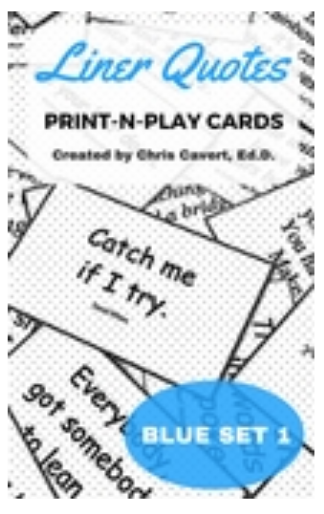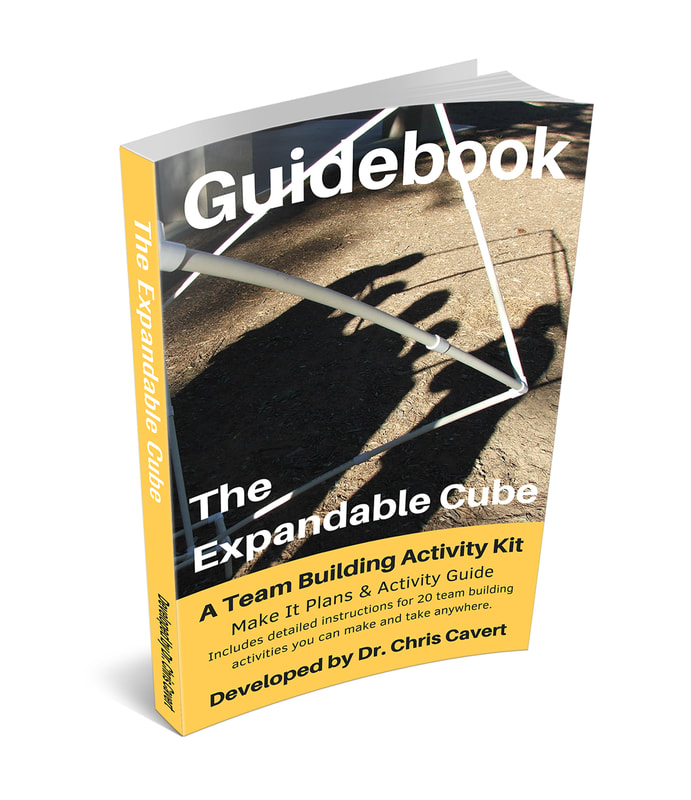NOTE: It's such a joy to experience programming tools that are new to me. I send a big thanks to the teambuilding collective out there innovating and sharing the newness!! Really. THANK YOU!
Okay. Play this in your head as you read. If it doesn't make sense, reach out to me for clarification. I promise it's worth the cognitive juices to translate into action.
So far my two experiences with this one have been with about 40+ players (ACCT) and about 30 players (UnConferene). During both, we were in one big circle, but I think it could be done with multiple concentric circles (circles inside of circles). I also think the challenges can be done in smaller pods of two to six – being a nice way to scaffold learning.
Claps Challenge
You are going to circle up your participants and ask them to be about elbows width apart. There are three challenge levels to the activity. Before each one, explain and demonstrate the challenge while participants have their arms down and relaxed. If you get them into the 'hands ready' position too soon, you may lose their attention. (And, the arms tire out and cause even more distraction.)
Challenge 1: Clap, Clap
Stand where everyone can see you. For example, in the middle of the circle if you are not planning on participating with the group (so you can observe behaviors). Or be a part of the circle standing in between two other people.
Place your hands in the 'hands ready' position. Your right hand will be open in front of you and slightly off to the right with your palm facing down. Your left hand will be open in front of you slightly off to the left with your palm up (see the picture above - specifically, the person in the middle). Again, you are doing this by yourself to demonstrate the action. NOTE: My thinking here is not to give away any sort of collaborative process by demonstrating with help. Do what works for you, of course.
Now, to demonstrate I'll say,
"The first challenge is to work together as a group and perform two simultaneous claps like this, CLAP, CLAP with the person on your right and left." [I move my right hand down and up twice and my left hand up and down twice on CLAP, CLAP so everyone can see the motions.] "The idea is to perform two distinct claps together, at the same time – as clear and crisp as possible. You can make as many attempts as you would like to reach your best result. When everyone in the group agrees to the best result, I will provide you with the second challenge."
At this point, the group is tasked to work together to accomplish the task. During my two experiences, we each started out working with the people to our left and right to discover how to clap together. Then, someone would eventually speak up, taking on some leadership, to figure out how we could all follow the same process. Then there were attempts, problem-solving, and eventually success – agreement on our best result. It was fun to watch.
NOTE: I'm thinking, that even if there are multiple groups in play, everyone attempts (performs) each challenge together. CLAP, CLAP.
That's the general idea of the process. Plan together. Practice. Perform to the best result.
Here are the other two challenges (each can be demonstrated without help):
Challenge 2: Clap, Clap, Flip, Clap, Clap.
On the 'Flip' everyone turns their hand 180 degrees – right palm faces up, left palm faces down, then Clap, Clap. With this challenge and the next, a rhythmic cadence is not required, like 1, 2, 3, 4, 5, and done – but we don't tell them this. The requirement is to do all the parts with synchronous claps and everyone agrees on the best result.
Side Bar: During my second experience (I was facilitating), someone did ask me what I thought about their attempt. Of course, I did a little 'facilitated questioning' which ended up with everyone interested in my opinion – fair real-world inquiry. So, I agreed to give them a grade (it was a B+) and the reason why (some claps were not performed at the same time as the majority of claps). The group decided to go for an 'A' grade, which took a few more attempts.
Challenge 3: Clap, Clap, Flip, Clap, Clap, Clap, Flip, Clap, Clap.
On the second Flip, hands go back to the starting position for the final Clap, Clap. During both of my experiences, the first two challenges had a similar pattern-based solution on the two claps. This third challenge made us change our strategy/pattern a bit to accommodate the three claps. Again, this was really fun to watch and experience together with the groups.
Additional Information:
- The first group of 40+ I participated with were adults, most of whom had many years of experience leading/facilitating groups through teambuilding activities. Getting through the three challenges, with about a 'B' average, took us about 12 minutes.
- The second group of about 30 included high school students and adults, but all of us had experience facilitating teambuilding programs. We played for about 10 minutes with a 'B' average on the first two challenges and only tried the third challenge a couple of times due to our time constraint – I wanted to at least show the group the last challenge.
- So, keep in mind, that this three-challenge experience could take a while if a group is set on reaching 'A-level' status. If you plan this as a closing activity, allow enough time to end on some level of success.
I hope this makes enough sense for you to try it. I'll get a video here as soon as possible. (And if you could send me a video!? That would be amazing.)
Have fun out there!
Chris Cavert, Ed.D.







 RSS Feed
RSS Feed